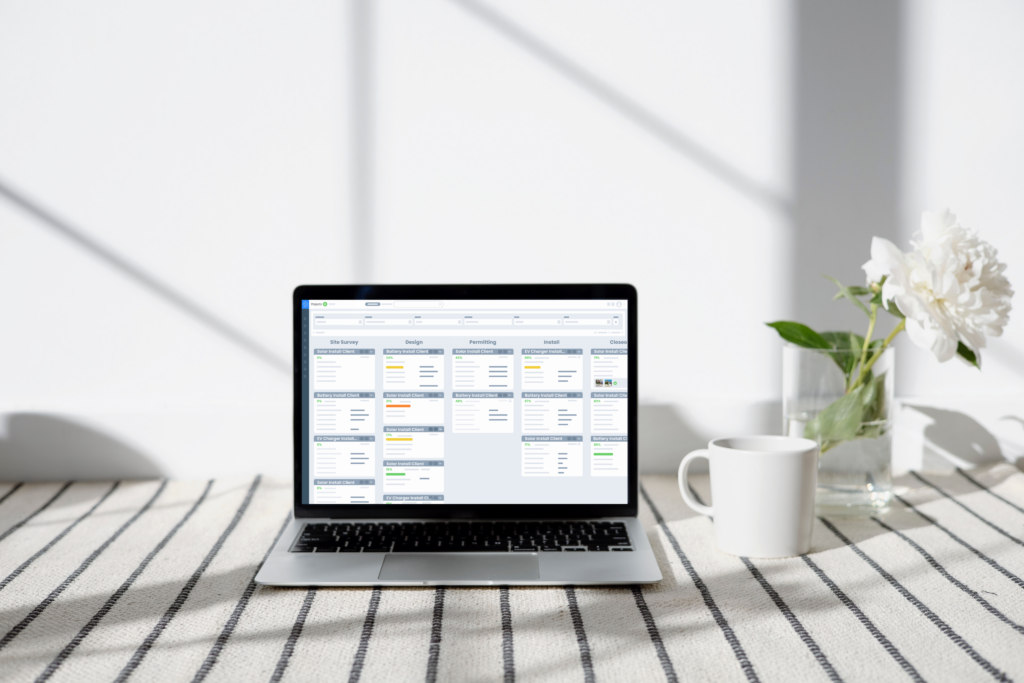If you are trying to determine how to build your solar software stack and where to start, we can assure you that you are not alone. There can be a wide variety of software tools that make up this tech stack, ranging from CRM and ERP tools to solar design and proposal, inventory and solar project management, e-signature, accounting, and more. For starters, we will examine just one of these tools – the solar CRM – and identify the best ways to incorporate it among your full technology stack.
Nearly all of the renewable energy companies we speak with fall into one of the following three categories. This guide is meant to help you determine where you fit and how to move forward.
Option A: Integrating Scoop with an Existing CRM
If you have an existing CRM and well established sales processes to collect, organize, and communicate with leads and potential customers, then you should consider integrating Scoop with your solar CRM software. This best-of-breed approach combines your existing efficiencies with the power of Scoop’s solar project management tool. For Scoop customers, this integration is achieved through GLOO™ which creates bi-directional data and workflows, ensuring the information across both tools is consistent and up-to-date.

GLOO is Scoop’s fully managed integration service that is used to connect Scoop with a variety of solar software tools. When integrated with solar CRMs, solar companies can eliminate manual data re-entry and communication by automatically transferring data across platforms. For example, users can create a workflow to transfer customer data from the CRM to Scoop once a contract has been signed. The Scoop mobile app allows solar sales reps to access and update client information while on-site and powerful analytics provide real-time insight into your solar sales pipeline.
Option B: Integrating Scoop with a New CRM
The next customer scenario we encounter is companies who do not have an existing CRM tool in place but require the ability to send mass email communications or create advanced marketing automations. While Scoop offers several traditional CRM features, including contact management, pipeline reporting, and integrated scheduling, marketing-based functionality does not currently exist in the platform. In this case, we recommend integrating Scoop with a CRM such as HubSpot. Similar to the above, this integration use case provides end users with best-of-breed functionality along with the convenience of accurate lead and customer data.

This integration can also offer cost savings to solar teams by reducing per user CRM subscription costs. Scoop’s unlimited user subscription model allows your operations and field team members to access relevant customer and project data from Scoop, leaving your CRM software seats for your marketing team and those who really need it.
Option C: Using Scoop as a CRM
The third category that your business may fall into is those who are able to use Scoop as their solar CRM. This is recommended if you do not currently have a CRM system in place and do not require marketing automation. If your business is using manual methods such as spreadsheets, notes, and emails to track customer interactions, consider moving these processes into an organized and digital platform such as Scoop.

The Scoop platform has several features that you would expect to find in a traditional CRM platform. Collect and organize lead, company, and site data, including photo capture during in-person sales visits. Workflow automations save time and streamline communication by allowing you to automate tasks, reminders, and project handoffs, as well as send one-on-one emails and SMS messages. Scoop also provides native calendar and scheduling features and the ability to create insightful reports and dashboards through LOOXY analytics.
Building the perfect solar software stack can be a daunting task. Scoop works with hundreds of busy solar and renewable teams and has years of experience partnering with these companies to help scale their operations and bring new efficiencies to both field and office teams. If you are still unsure about how to incorporate a solar CRM into your technology stack, our team would be happy to provide a personalized recommendation. Get in touch today to start the conversation.


